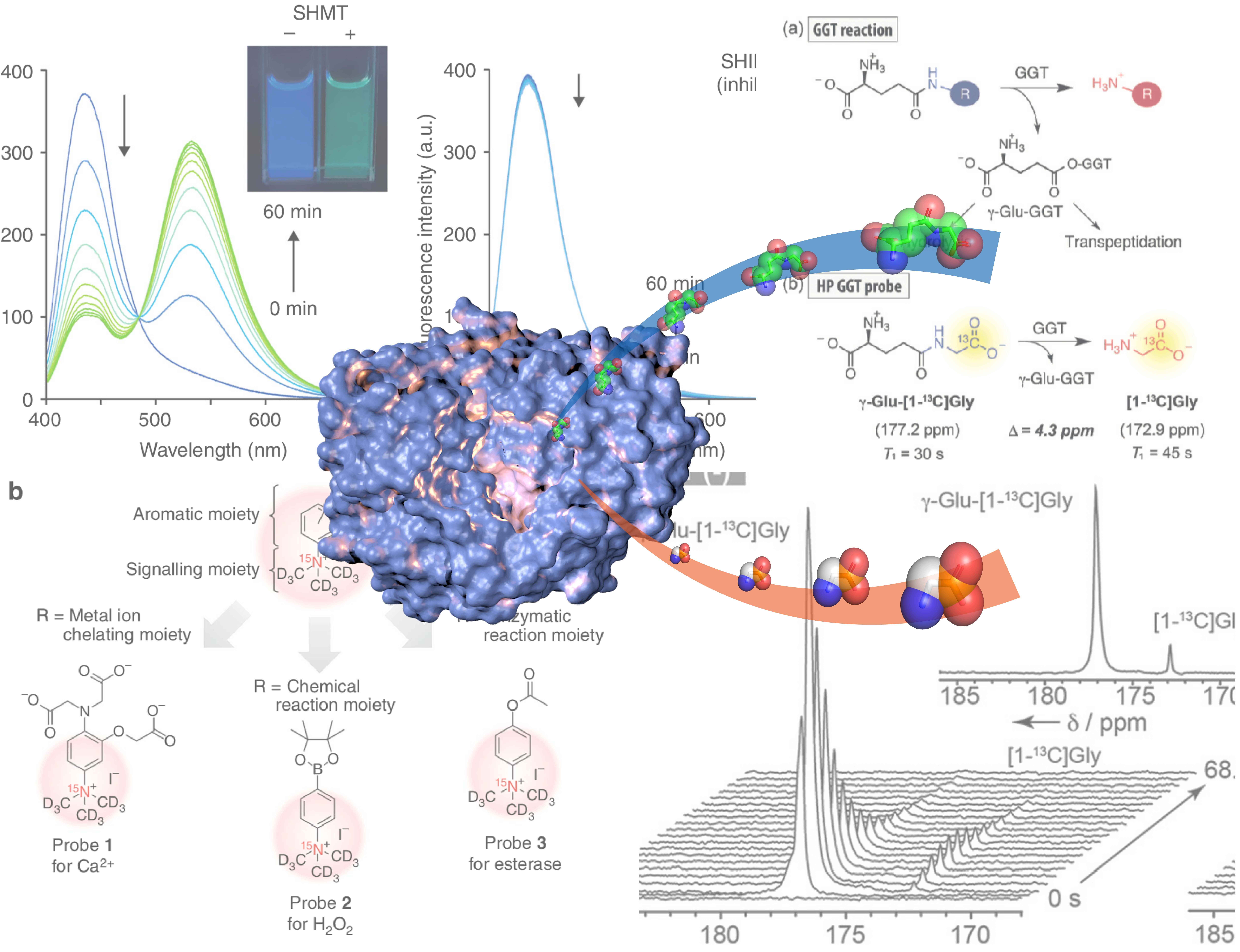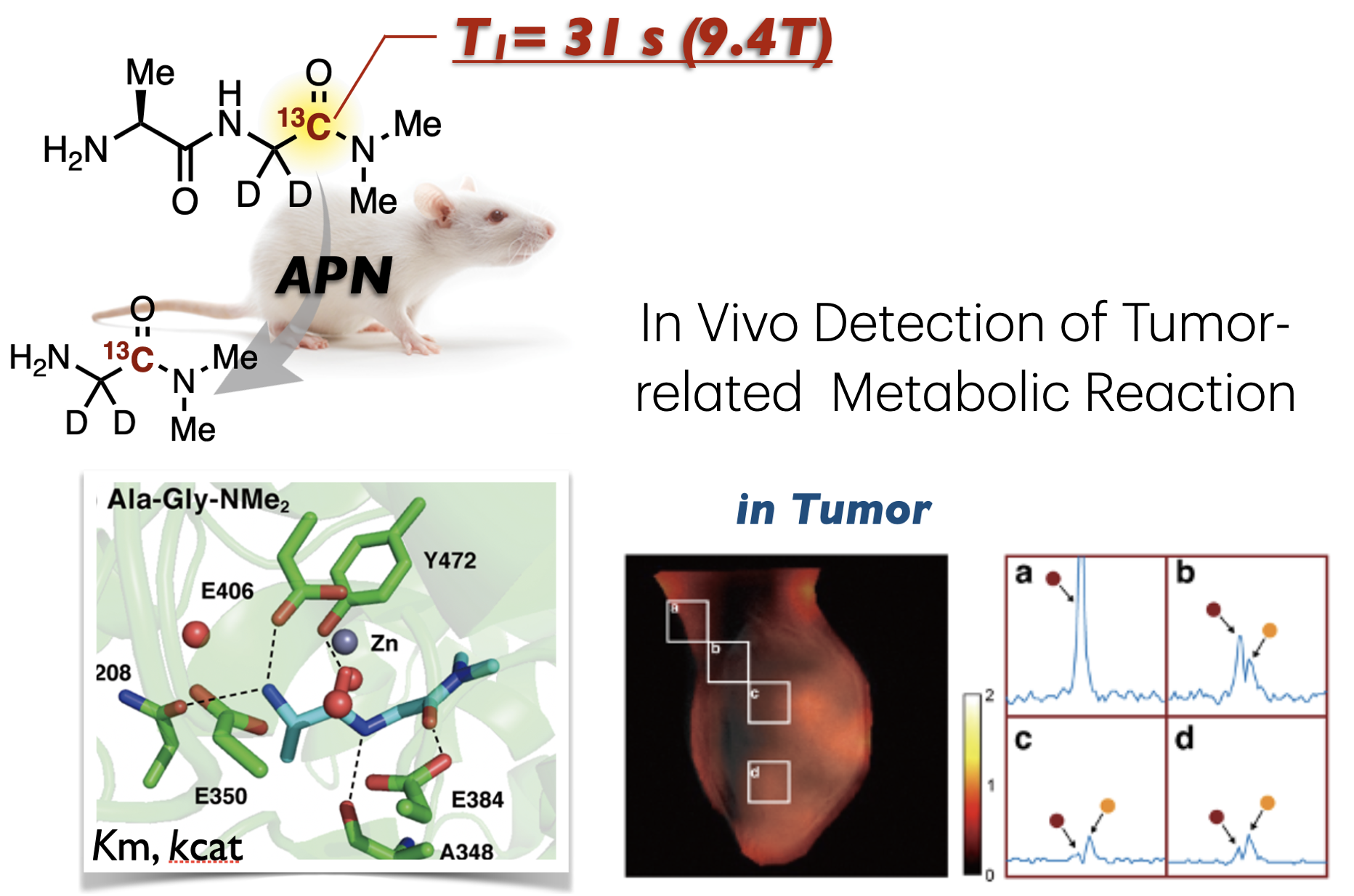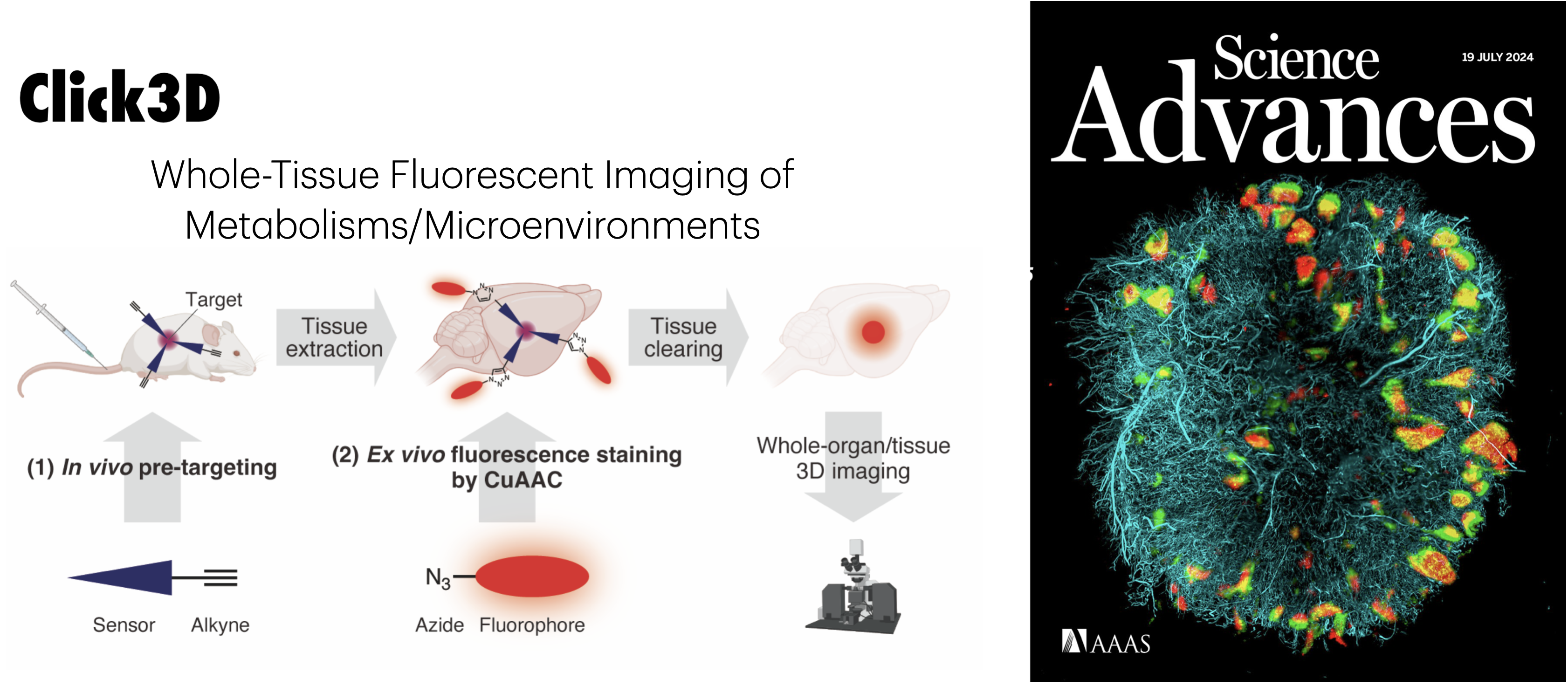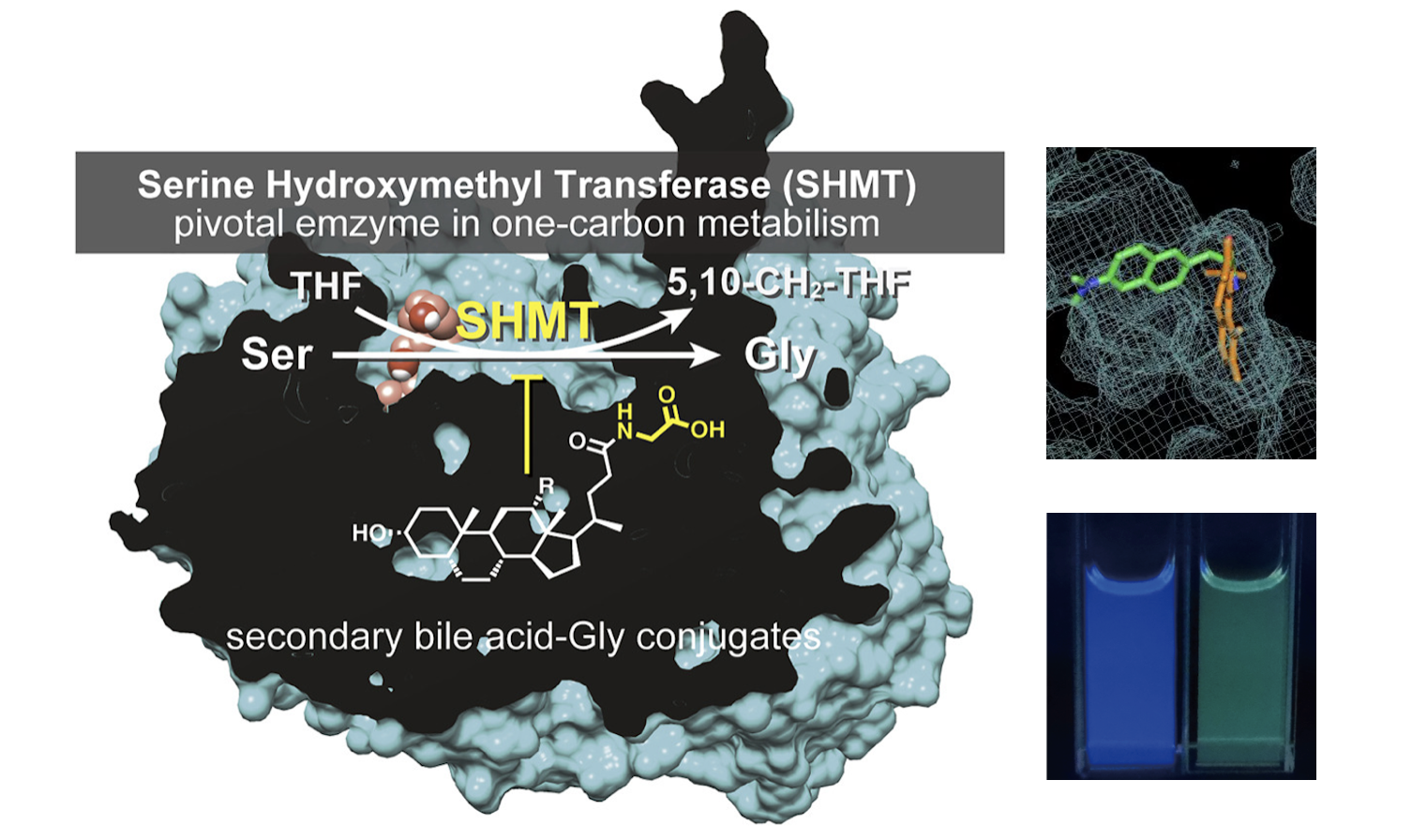Project 1. Chemical Biology of Disease

Our biological activities are caused by the activities of biomolecules called “metabolism. In recent years, research on genes and proteins has progressed dramatically, but the “activity of biomolecules = metabolism” is still an area of mystery. We attempt to develop molecular sensors to visualize in vivo metabolism and microenvironment. We aim to realize early diagnosis of diseases and develop molecular tools to control metabolic networks, i.e., inhibitors and drugs.
In Vivo Imaging of Disease-related Metabolisms

Nuclear magnetic resonance (NMR/MRI) has great potential for bio-metabolic imaging. On the other hand, its application has long been limited by its fatal drawback of low detection sensitivity. We have focused on dynamic nuclear polarization (DNP) technology, which can increase NMR sensitivity by tens of thousands of times, and are developing molecular probes and methodologies for real-time imaging of disease-specific metabolic reactions in vivo by using our original molecular design.
[References] Nature Commun. 2013, 4, 2411. Angew. Chem.,Int. Ed. 2016, 55, 1765–1768. Angew. Chem., Int. Ed. 2016, 55, 10626–10629. Angew. Chem., Int. Ed. 2021, 60, 2–23. (review) Science Adv. 2022, 8, eabj2667. Science Adv. 2024, 10, eadp2533. ChemStation Next-generation molecular imaging based on molecular design
Tissue Clearing x Metabolic Imaging of Diseases

Highly accurate spatiotemporal metabolic information at the tissue and individual level is essential for understanding biological functions and disease mechanisms. For precise metabolic and microenvironmental imaging at the tissue and individual levels, we are developing molecular probes compatible with tissue-clearing technology. Molecular imaging using tissue clearing technology enables high-resolution 3D analysis of the biological microenvironment and enzyme activity and is being applied to elucidate disease mechanisms and drug discovery analysis.
[References] Science Adv. 2024, 10, eado8471. ACS Nano 2024, 18, 5167–5179.
Fluorescent molecular probes to visualize biological metabolism and inhibitor discovery

Serine hydroxymethyltransferase (SHMT), an enzyme that works in One Carbon Metabolism, is an important biometabolic enzyme that has recently attracted attention as a target enzyme for anticancer drugs and malaria, for which no definitive treatment has yet been established.
On the other hand, the substrate of this enzyme is a simple molecule (serine) and is very small, making it difficult to develop molecular probes. We have succeeded in developing a fluoresncet molecular probe for SHMT based on detailed analysis of the enzyme reaction mechanism. We also constructed a drug screening system using this probe and succeeded in searching for new SHMT inhibitor candidates among approximately 200,000 compounds. This achievement is expected to elucidate new life phenomena related to SHMT and to develop therapeutic drugs for various diseases.
[References] Nature Commun. 2019, 10, 876. iScience 2021, 24, 102036.
